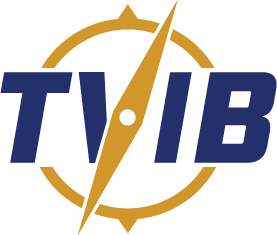Marine Internal Lead Auditor (MILA) – Nov 5-6 in Houston, TX
TVIB has partnered with ACTSafe Training in this Coast Guard Recognized Marine Internal Lead Auditor course (2-day course) , which is designed to teach the specific skills and knowledge necessary to conduct and lead internal audits for commercial marine companies. This fast-paced, informative course requires active participation and successfully completing practical exercises, quizzes, and a final exam in order to earn a certificate.
This course meets the requirement of ANSI Z 490.1 Criteria for Accepted Practices in Safety, Health and Environmental Training and 46 CFR 138.310(d)(2) for those individuals performing internal audits under Subchapter M. This is NOT the appropriate course for those individuals seeking certification to perform TSMS audits for TVIB as a TPO.
More Info/Registration
Sub M Auditor Certification – Nov 13-15 in Houston, TX
The Subchapter M Auditor Certification course (3-day course) teaches external (third-party) auditors how to audit a company’s TSMS, with an emphasis on those companies using the American Waterways Operators’ Responsible Carrier Program as the framework for their TSMS. Students who successfully complete this course will have an in-depth understanding of auditing both safety management systems and the vessels that operate under those systems and what compliance means under Subchapter M. This is the appropriate course for those individuals seeking certification to become an approved TPO Auditor, as well as an RCP Lead Auditor/Vessel Auditor. This course is also ideal for company personnel who want to better understand the expectations of their external auditor.
This course meets the requirements of 46 CFR 139.130(b)(4) for those seeking to perform external audits under a TPO.
More Info/Registration
Annual Survey of Towing Vessels (ASTV)Dec 4-7 in Houston, TX
The Annual Survey of Towing Vessels course (4-day course) provides surveyors with the knowledge and skills required to perform TVIB TPO Subchapter M annual surveys of towing vessels. It has been designed to teach those who will be performing surveys as a part of an internal survey program, as well as those surveyors who wish to hold the credential to perform external surveys for TVIB. Everyone who successfully completes the course will receive a course completion certificate. This course is the surveying course required for those individuals seeking the TVIB Certified Subchapter M Surveyor for Annual Surveys credential.
More Info/Registration
Make sure to stop by Booth 3944 at the International Workboat Show in New Orleans – November 28-30. We look forward to seeing you there.
Upcoming TVIB Board Meeting in New Orleans November 27th. Stay tuned for details and registration. We will host an info session that same morning.
